‘Listening to communities must go beyond ticking compliance boxes’, says Peter Kallang, a Kenyah leader
Jun 9, 2021
- The Malaysian state of Sarawak was until recently home to some of the last nomadic peoples of Borneo, who roamed its wild and rich rainforests as they had done since time immemorial. Starting in the early 1980s, industrial logging companies moved deep into Sarawak’s hinterland, tearing down forests, forcing forest peoples from their traditional lands, and laying the groundwork for large-scale conversion of biodiverse ecosystems into monoculture plantations.
- Sarawak’s Indigenous peoples put up resistance against these state-backed incursions into their traditional territories. One of the most dramatic outcomes of these efforts came in 2016, when the Chief Minister of Sarawak cancelled the Baram mega-dam project.
- Peter Kallang, a member of the Kenyah people who runs the NGO SAVE Rivers, was one of the leaders of the Baram campaign, helping coordinate, organize, and mobilize Indigenous communities that would have been most impacted by the dam. Now Kallang, SAVE Rivers, and other groups are fighting to defend traditional Indigenous lands against logging by Samling, a Malaysian timber company.
- Kallang spoke about his background, Indigenous-led advocacy, the conservation sector’s shortcomings in recognizing Indigenous rights, and other topics during a June 2021 interview with Mongabay founder Rhett A. Butler.
The Malaysian state of Sarawak was until recently home to some of the last truly nomadic peoples of Borneo, who roamed its wild and rich rainforests as they had done since time immemorial.
Starting in the early 1980s, industrial logging companies moved deep into Sarawak’s hinterland, tearing down forests, forcing forest peoples from their traditional lands, and laying the groundwork for large-scale conversion of biodiverse ecosystems into monoculture plantations. Mines and large-scale dams proliferated across the landscape, affecting rivers and further displacing forest-dependent communities. This orgy of ecological devastation was coupled with astounding levels of corruption: campaigners allege that Abdul Taib bin Mahmud, the Chief Minister of Sarawak from 1981 to 2014, amassed billions of dollars in wealth during his reign, despite earning a modest civil servant salary.
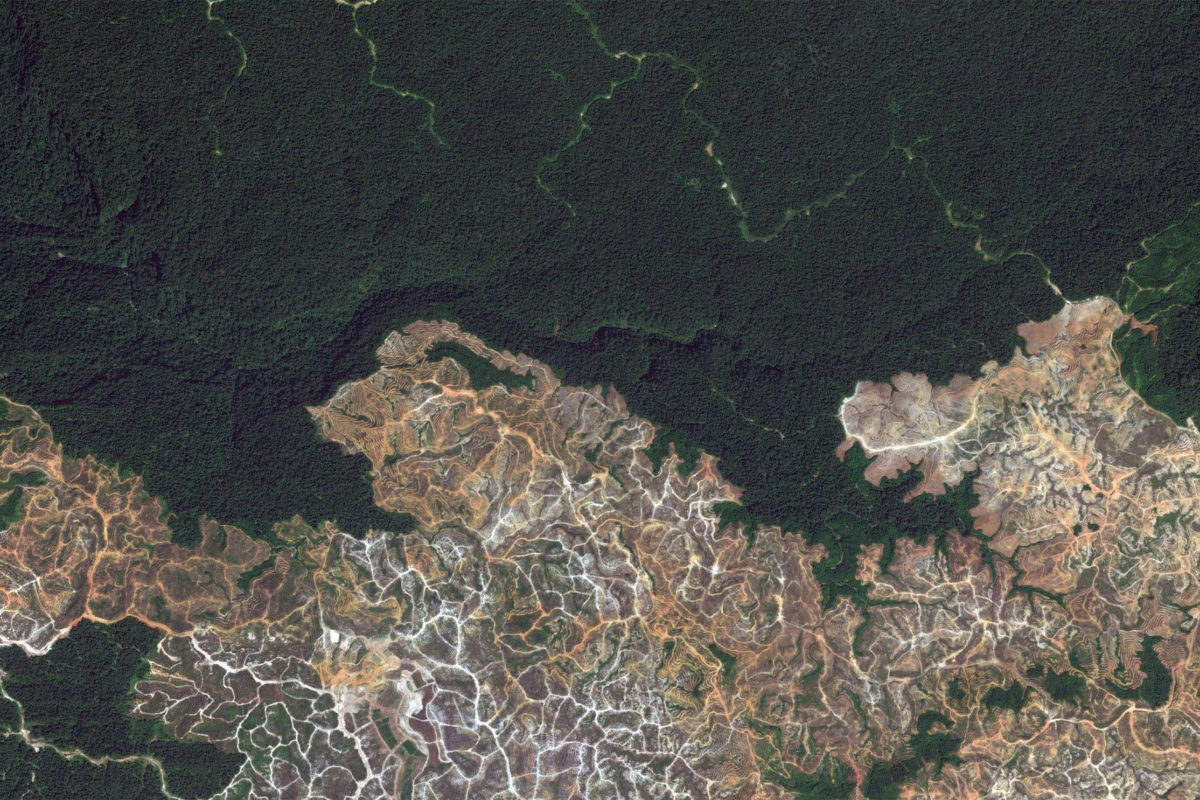
Sarawak’s Indigenous peoples put up resistance against these state-backed incursions into their traditional territories, blockading logging roads, protesting in Malaysian cities, establishing NGOs, filing legal challenges, and forming alliances with local and international groups like the Bruno Manser Fund and The Borneo Project. They were met with intimidation and violence, ongoing destruction of their forest home, and criminalization of their activities.
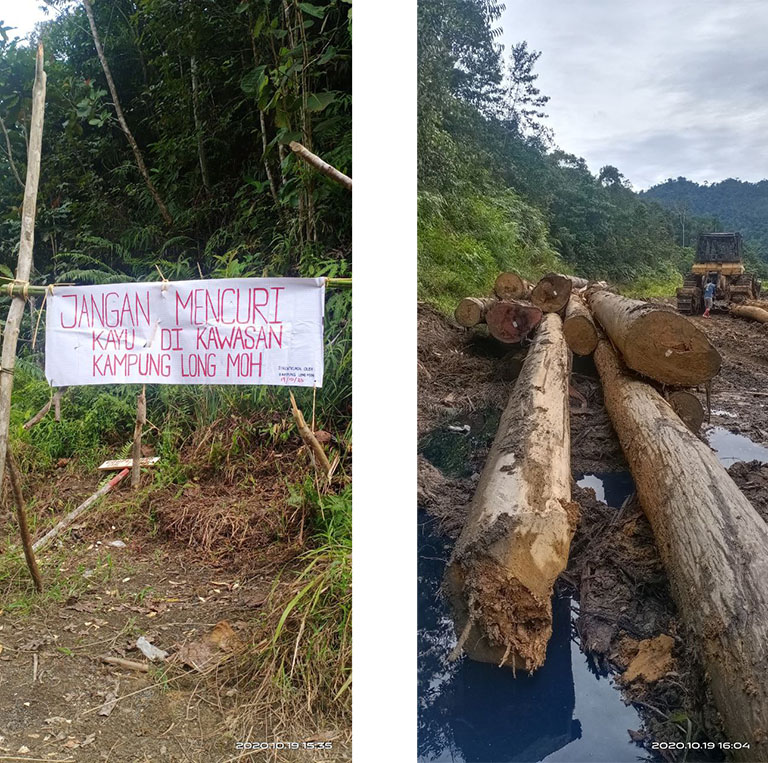
Indigenous peoples in Sarawak continue to face these challenges, including a current battle against Malaysian forestry giant Samling, which recently threatened legal against Penan and Kenyah communities for alleging that the logging company “has encroached on community land, has withheld key documents about the certification process, and failed to obtain free, prior and informed consent of affected communities during the certification process,” according to a recent Mongabay story.
One of the NGOs leading the campaign against Samling is NGO SAVE Rivers, a group led by Kenyah community member Peter Kallang. SAVE Rivers made a name for itself in the early 2010s when it spearheaded a campaign to defend Indigenous lands from the Baram dam, which would have flooded at least 389 square kilometers (150 square miles) and displaced 20,000 people, most of whom were from Indigenous Kenyah, Kayan, and Penan communities.
The Baram dam was a centerpiece of the Sarawak Corridor of Renewable Energy (SCORE) initiative, which included several megadams that would have flooded still more rainforest and Indigenous communities. In 2016, Sarawak Chief Minister Tan Sri Adenan Satem abandoned Baram and signalled that the government would abandon plans to build other major dam projects in the state. The cancellation ushered in a shift in mindset around energy production in Sarawak and beyond, opening up a space for discussions around small-scale micro hydro and solar power generation.

Kallang says that the successful Baram campaign demonstrated what could be achieved via Indigenous community-led campaigns.
“One of the most important elements was raising awareness in the affected communities who love their land, rivers and villages,” Kallang told Mongabay during a recent interview. “Organizing the grassroots resistance was key. Their unwavering opposition to the project and support for the campaign made it a real challenge for the owner and proponents of the dam. The villagers were the ones who were building and manning the blockades and monitoring the different sites in the vicinity, ensuring there was no intrusion by outsiders.”
“Support for the affected communities by national and international individuals, organizations, foundations and authorities including professionals like lawyers and academics contributed significantly in strengthening the opposition to the dam. Community resistance was backed up by data demonstrating how harmful and unnecessary the dam would be, so we had the human rights, environmental and economic arguments all stacked on our side. It was clear the dam was designed to benefit the few at the expense of many.”
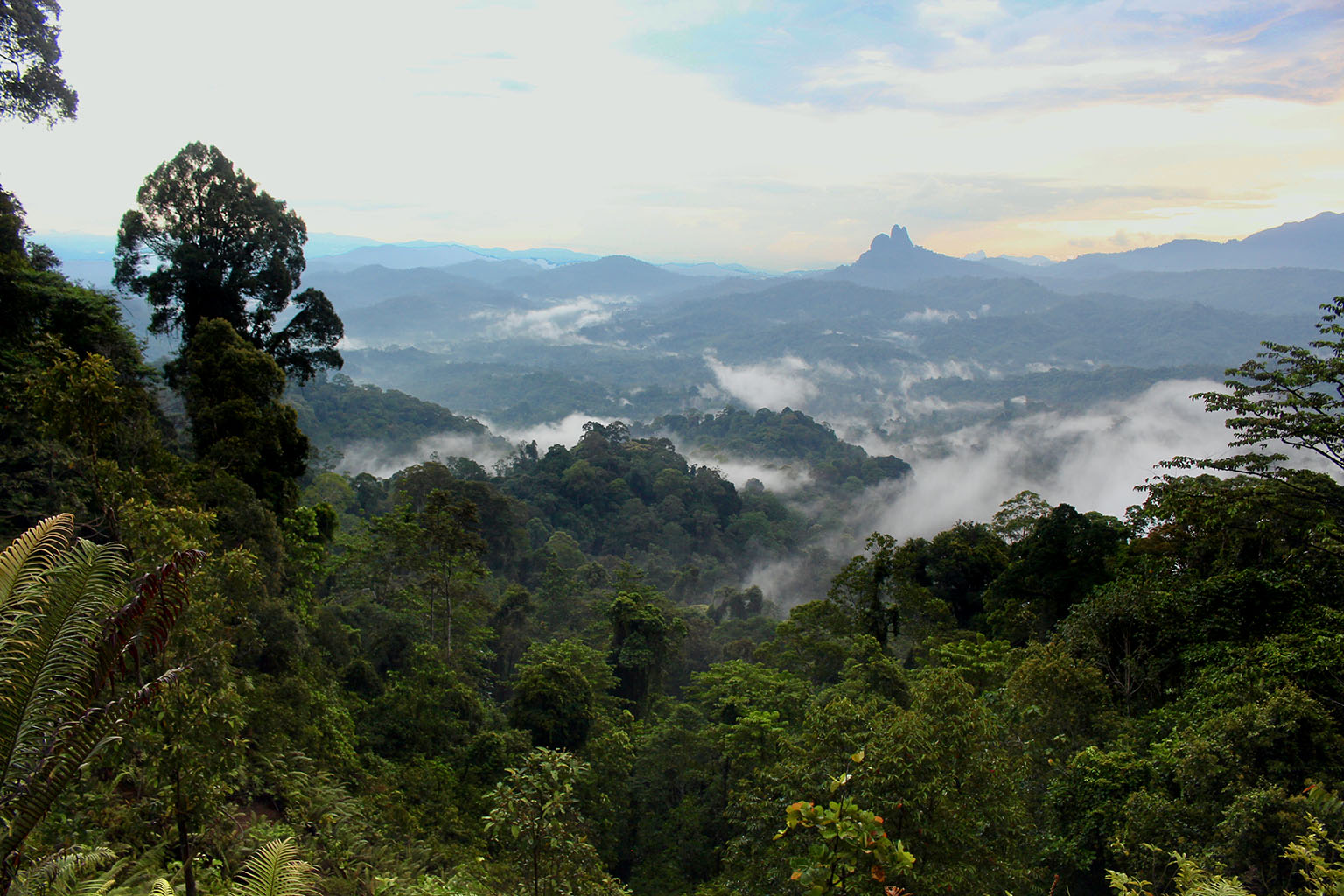
Kallang says that the Baram campaign holds lessons not just for extractive industries, but the conservation sector too.
“Listening to communities must go beyond ticking a few compliance boxes,” he said. “Bottom-up approaches where communities lead the charge are where we have seen the most success, like the Baram dam campaign or village scale micro-hydro and solar installation projects. Respecting traditional ecological knowledge and empowering communities to create their own projects based on their own needs garners the best results because you have real buy-in. These types of projects are far cheaper and more impactful, yet they receive little of the available funding.”
Kallang spoke about his background, Indigenous-led advocacy, the need for the conservation sector to put community rights at the center of their efforts to protect nature and natural resources, the challenges COVID-19 has presented to Indigenous communities in Borneo, and more during a June 2021 interview with Mongabay founder Rhett A. Butler.
Mongabay: What prompted your interest in and concern for environmental issues and Indigenous rights?
Peter Kallang: This is something I grew up with, being an Indigenous Bornean of the Kenyah community. Love for the environment and the Indigenous rights is natural for me.
I was born and spent a good part of my childhood in a village of clean rivers with plenty of fish and natural forest with lots of jungle products. To supplement what we planted, our villagers used to have all the food they needed by collecting wild vegetables, fruits, bamboo shoots, mushrooms, and more from the forest and rivers. While we planted rice as our staple food, we grew cash crops like coffee, banana, corn, tapioca, yam and rubber. Food was not a problem for the villagers who were subsistence farmers.

Starting from the 1980s, industrial-scale logging, monoculture plantations, oil and gas development, and hydroelectric dams started to be the economic focus, which was encouraged or enforced by the government. These industries impacted the environment and often ignored the rights of the Indigenous peoples and the local communities. My interest in and concern for environmental issues and Indigenous rights spurred me to take action after seeing the destruction of the things which I love.
Mongabay: You’ve been working in this space for decades. What are the biggest differences in this field between when you got your start and now?
Peter Kallang: Over the years, there is an increasing number of Indigenous people who dare to speak out for their rights and are channelling their grievances to the right authorities or using social media to express their anger, frustration, and dismay.
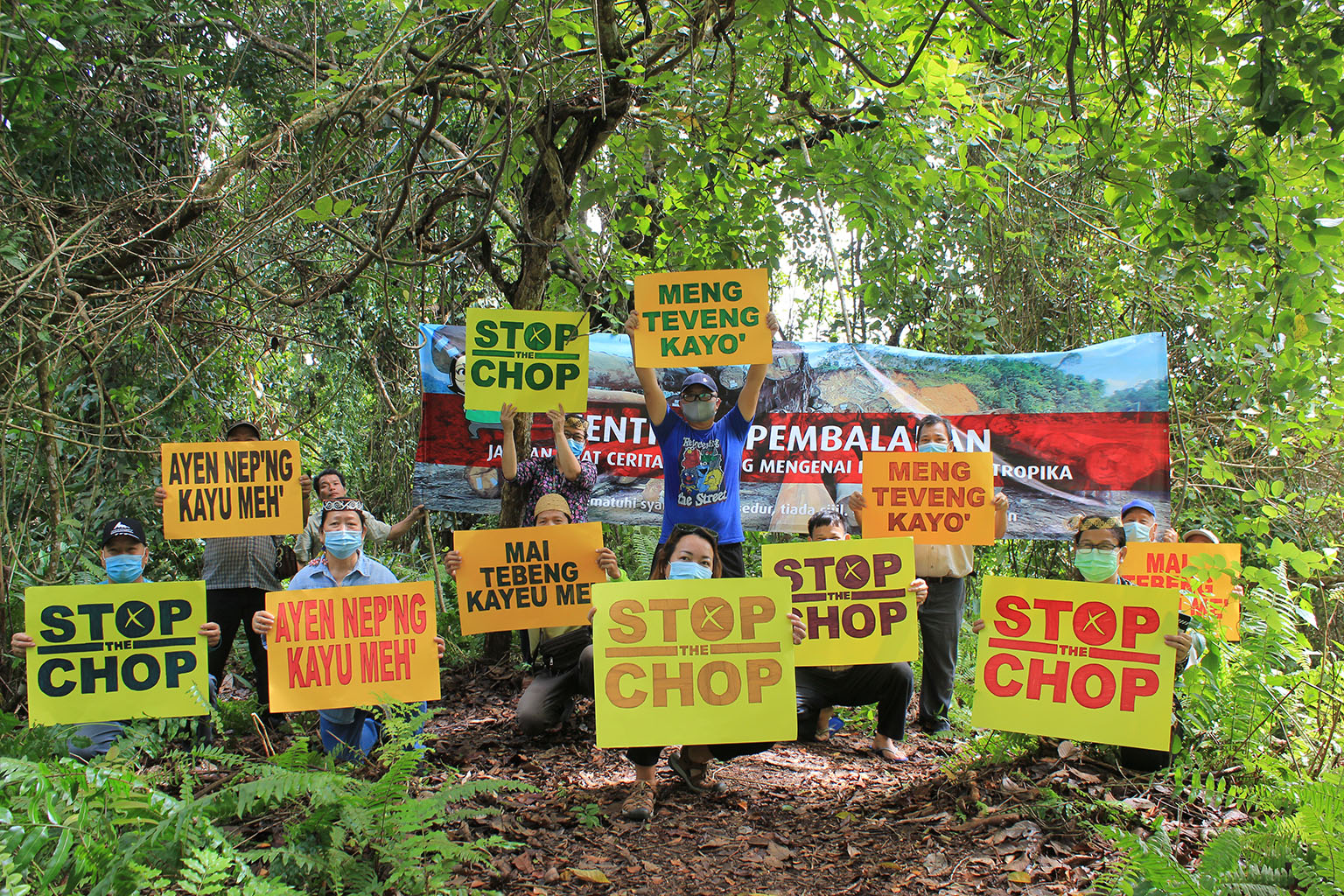
Nowadays, Indigenous peoples and local communities (IPLC) are not as easily intimidated by land grabbers or trespassers as we were before. This can also be seen by the increasing number of court cases, protests and blockades, which are quite frequent. Before, there were very few Indigenous communities who dared to be seen as opposing the power that be. Most of them were afraid of retribution.
Mongabay: Before you began volunteering with civil society groups, you worked in the private sector. What lessons from that first phase of your career have been most useful in your advocacy and organizing efforts?
Peter Kallang: The years of working in the private sector really benefited me more than just earning a living. It was also an opportunity to learn in a very practical way. I was fortunate to work side by side with those of different backgrounds, ranks and values.
Spending twenty-nine years with multinational companies and organizations was also a privilege in being exposed to foreign cultures and views. In advocacy and organizing, NGOs often need to reach out beyond the state or national border to foreign establishments or international organizations for support. So, those years of exposure are all valuable assets now.

Interactions in the private sector also extended from the workplace to social events like sports, volunteering in social charitable or welfare organizations like trade unions, youth organizations, debate clubs, and consumer associations. All these organizations require planning and teamwork which are valuable in the advocacy and organizing required to run NGOs like SAVE Rivers.
Mongabay: Ten years ago, you became the founding chairman of the SAVE Rivers Network to coordinate the resistance against the construction of the proposed dams in Sarawak. How did that initiative come together?
Peter Kallang: That was in 2011 when I learnt that Baram dam was the next of a series of hydroelectric dams proposed for construction.

I was invited to a meeting organized by a group of NGOs to rally support in resisting the plan. At that meeting we learned about what the dam would mean for the communities of Baram – that so many villages would be completely erased. When a village loses their land, they lose everything, they lose their identity and their origin, not just their farms and houses. It was then that I was selected to be the chairman of a network comprising eight CSOs & representatives from various villages from Baram.
Mongabay: Why was the campaign against the Baram dam and SCORE successful? And what should activists take away from that experience for other campaigns?
Peter Kallang: There was an interplay of various factors which contributed to the success of the campaign against the Baram dam. It started with teamwork with the communities and NGOs including SAVE Rivers. The team planned the campaign strategy and implemented the strategy together. Once implemented, review of the strategy was ongoing throughout the campaign and based on the reviews, the strategy was adjusted as, and when, required.
One of the most important elements was raising awareness in the affected communities who love their land, rivers and villages. Organizing the grassroots resistance was key. Their unwavering opposition to the project and support for the campaign made it a real challenge for the owner and proponents of the dam. The villagers were the ones who were building and manning the blockades and monitoring the different sites in the vicinity, ensuring there was no intrusion by outsiders. All this support from the villagers was made possible after information sharing by SAVE Rivers about the social and environmental impacts of the dam, especially to those who were directly affected.

For SAVE Rivers, while maintaining communication and information sharing with the community throughout, workshops, trainings, legal actions, police reports, press conferences, press releases, fundraising, and networking were the order of the day.
Support for the affected communities by national and international individuals, organizations, foundations and authorities including professionals like lawyers and academics contributed significantly in strengthening the opposition to the dam. Community resistance was backed up by data demonstrating how harmful and unnecessary the dam would be, so we had the human rights, environmental and economic arguments all stacked on our side. It was clear the dam was designed to benefit the few at the expense of many.
Local voices were finally heard when the Chief Minister of Sarawak Adenan Satem cancelled the dam in March 2016, just before the Sarawak state election. At a press conference the Chief Minister said that there was no need for more mega-dams to be built in the state.
Mongabay: Mega-dams and unsustainable energy projects remain major issues in the region. What do you see as the key levers for driving a shift in thinking around energy production?
Peter Kallang: I would think the determining factors are
(1) COST OF ELECTRICAL GENERATION
The cost of investment and maintenance to generate electricity through renewable energy systems continues its decreasing trend. It is at a point when it is just logical and more attractive compared to power from hydroelectric, nuclear, and fossil fuel installations.
(2) SUSTAINABILITY
Wind & solar power installations, over their whole lifespan, from manufacturing and construction, produce increasingly lesser emissions compared to large hydroelectric and fossil fuel installations.
The durability and robustness of the system and its associated accessories like power storage continue to improve and be at least as reliable or better than the conventional system.
The social and ecological impacts of solar & wind power are far less than the current system.
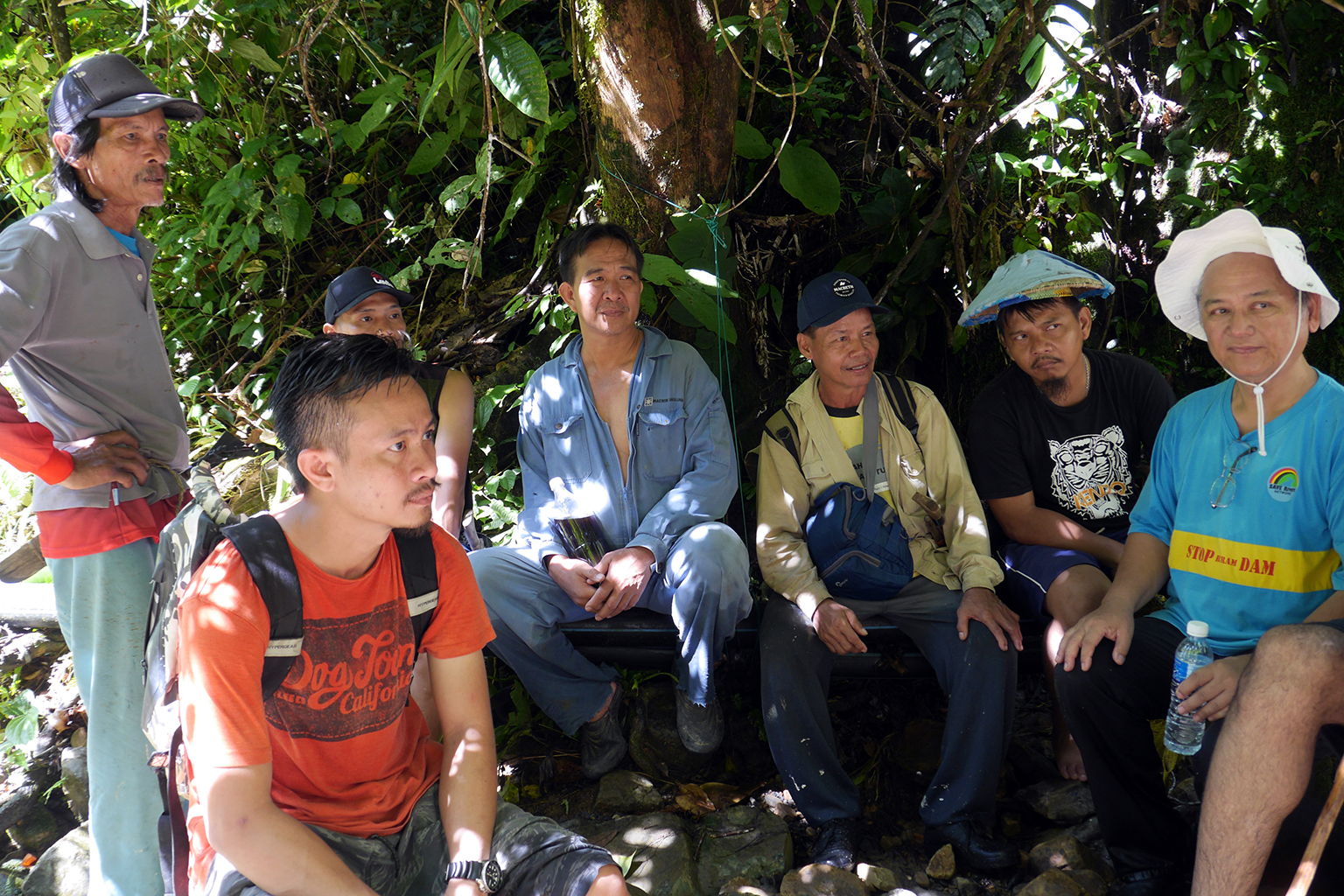
(3) SHIFT IN MINDSET
There are still people in the energy industry and the government who refuse to see how the world is changing, who refuse to give up on fossil fuels and harmful mega-projects. They are clinging to the old ways, but in the end, this strategy won’t work. The world has already changed, whether they like it or not.
Mongabay: You are a regular host for the ethnic Kenyah Miri FM radio broadcast. What types of messages most resonate with your audience and move people to action?
Peter Kallang: We cover issues on a range of topics from customs, tradition and languages of the different Kenyah communities to issues concerning opportunities in education and training. We interview ethnic Kenyah from various professions to share their experiences and knowledge related to their expertise. Those invited range from professions like education, agriculture, medicine, and forestry to veterans and elders from the villages.

The most popular content for the parents and youth is regarding educational opportunities, scholarships, and available technical and vocational courses.
For the listeners in the villages and rural areas, they are interested in subjects concerning culture and tradition.
Mongabay: Deforestation and forest degradation is slowing in Sarawak after 30 years of extensive damage. What would you like to see happen in those degraded areas that now could potentially recover or be restored?
Peter Kallang: The primary objective must be to reverse the destruction to the ecosystem and biodiversity impacted by logging and other extractive industries, and strengthen community-led initiatives in the process. Monoculture plantations for future logging, disguised as forest cover, is not the answer to reforestation or the remedy for the extensive damage. Rural Indigenous communities have borne the brunt of the impact of extraction, and they’re also the ones who have solutions, who know what will work on their land, and who must have ownership over projects in order for those projects to succeed. There are many Indigenous communities that are already starting reforestation nurseries, agroforestry projects, and other initiatives to restore their land.

One of the major initiatives is known as the Baram Peace Park, a project to build regenerative livelihoods in communities while protecting the largest remaining primary forest in Sarawak outside of a protected area. This is an important wildlife corridor between the Kayan Mentarang National Park in Kalimantan and the Pulong Tau National Park in Sarawak. It’s also home to many Indigenous communities who have championed this idea for many years. The project was formally endorsed by the ITTO last November, and now we’re securing the funds needed to implement it.
Mongabay: The conservation sector has traditionally been colonial in how it approached its objectives, often ignoring or undermining Indigenous Peoples’ rights. But over the past decade, there’s been a rising emphasis on the role Indigenous Peoples, and local communities, play in stewarding ecosystems and wildlife. What do you think was the impetus for this shift? And how can these gains be extended and ingrained in conservation practice?
Peter Kallang: Yes, there is a growing acknowledgement that the Indigenous peoples’ traditions and knowledge are vital to protect global biodiversity.
“A glaring fact is that 80% of the world’s remaining forest biodiversity lies within Indigenous peoples’ territories, and Indigenous and community land store at least 24% of the above-ground carbon in the world’s tropical forests,” read a statement issued by the IUCN Director General on International Day of the World’s Indigenous People 2019.

There must be full collaboration, consensus, mutual respect, and transparency with IPLCs in the conservation sector. Fortunately, conservationists are starting to see that IPLCs have always been generating solutions for conservation, and I think this must be in part because top-down, colonial approaches are simply not working, while locally-managed projects are succeeding.
Mongabay: Beyond what you’ve mentioned so far, what do you see as other major gaps in conservation? In other words, what does the conservation sector need to do better?
Peter Kallang: Conservationists sometimes underrate or ignore the importance of the social aspects of conservation.
The rights of the IPLC must be respected, starting with meaningful Free Prior and Informed consent (FPIC). A lack of FPIC is a huge problem in Sarawak, where communities are often left with little or no information about proposed projects on their land. Where consultation is lacking, real consent is impossible. Both governments and the conservation sector need to be in full compliance with the United Nation Declaration on the Rights of Indigenous Peoples (UNDRIP), and guided by the ILO C169 – Indigenous and Tribal Peoples Convention.
Listening to communities must go beyond ticking a few compliance boxes. Bottom-up approaches where communities lead the charge are where we have seen the most success, like the Baram dam campaign or village scale micro-hydro and solar installation projects. Respecting traditional ecological knowledge and empowering communities to create their own projects based on their own needs garners the best results because you have real buy-in. These types of projects are far cheaper and more impactful, yet they receive little of the available funding.
Mongabay: What has been the impact of the pandemic on communities with which you work?
Peter Kallang: Those who suffer most are the rural to urban migrants (mostly Indigenous communities), and we have been working with the EU to distribute food packages to these vulnerable communities. As for those Indigenous subsistence farmers who still live in their villages, the lockdown hasn’t had much impact on their food chain, although we have reports of shortages of staples like oil, salt and sugar which have to be brought from town.
Logging has been exempt from movement control orders, so communities have reported logging on their land in areas they say are unpermitted, but they cannot visit government or company offices to make a complaint, or meet with us and other communities to discuss potential actions. The pandemic has made it particularly difficult to organize like we normally would. In 2020, we launched the Stop the Chop campaign against unpermitted logging in the Baram area, calling out a lack of FPIC and calling on the timber certification bodies to hold companies to account.


In Sarawak, environmental and social impact reports are only available in-person at a government office, they are not made available to communities or published online for scrutiny. So, with travel locked down and most offices closed, accessing these reports has not been possible. We have repeatedly requested these reports be made available so we know what exact environmental crimes are occurring, but so far we haven’t been able to access these documents.
Mongabay: Do you see opportunities for advancing your goals in the post-COVID recovery?
Peter Kallang: Once the Movement Control Order (MCO) is lifted, SAVE Rivers will be able to continue doing field work and community engagement which have been impossible for the last fourteen months. There are a lot of outstanding activities which require actual physical presence now which are still deferred until things are back to normal again. We are used to operating at the village level, building and maintaining those in-person relationships, so we look forward to consultations for the Baram Peace Park getting under way, as well as all the other field work that has been left on the back-burner during the pandemic.
Mongabay: What advice would you give for someone who wants to take an active role in supporting Indigenous Peoples’ rights?
Peter Kallang: The first thing is to know them. So, spend time in their villages, if you are welcome there, listen to them, and understand them. Ask the people what their community’s needs are, and what ideas they have. Understand those needs from their perspectives. Communities have different needs, but they all require respect.
Maybe there is an organization in your community that supports Indigenous rights. Maybe you support an Indigenous-led organization in another country. The important thing is to support locally-led initiatives, rather than top-down projects led by large entities.
Mongabay: What would you say to young people who are distressed about the current trajectory of the planet and society?
Peter Kallang: Just look around you, there are solutions everywhere. We’re on the cusp of realizing important changes around the world.
When we started the fight against the Baram dam, everyone said we would lose, but we did not give up. They also said the Baram Peace Park would never happen, and yet we’re very close to making that a reality too.

It is everyone’s job to imagine the world they want to live in, and then take steps towards making that vision a reality. Hope, imagination, and determination are changing the world. If we cannot visualize the world we want, we cannot make it happen.
Even though we are up against powerful forces that profit from the destruction of communities and the planet, there are multitudes of people taking steps towards a different future all around the world. Find those groups, join them, and take steps towards a new reality together.